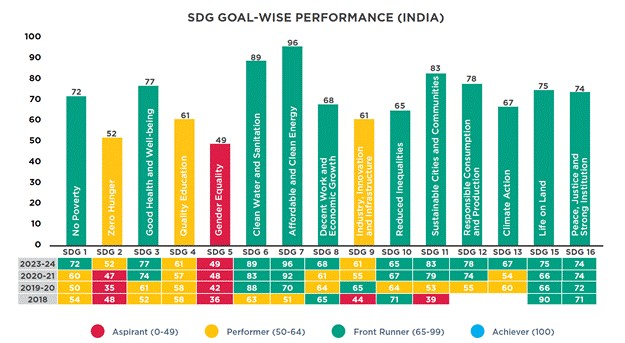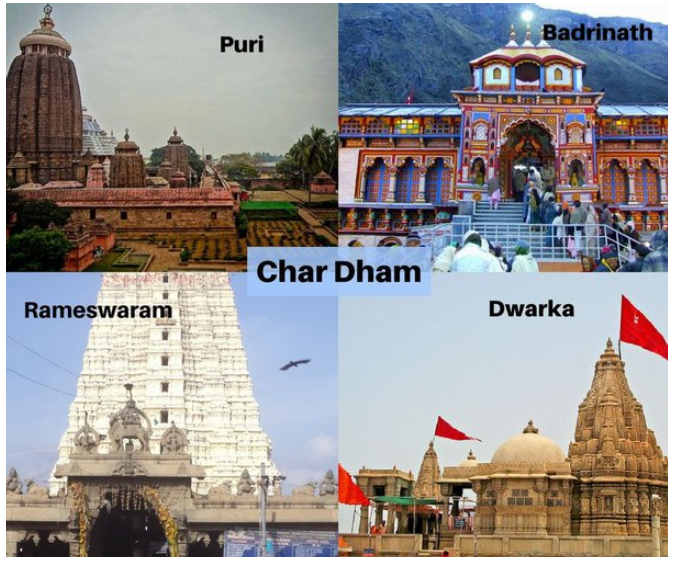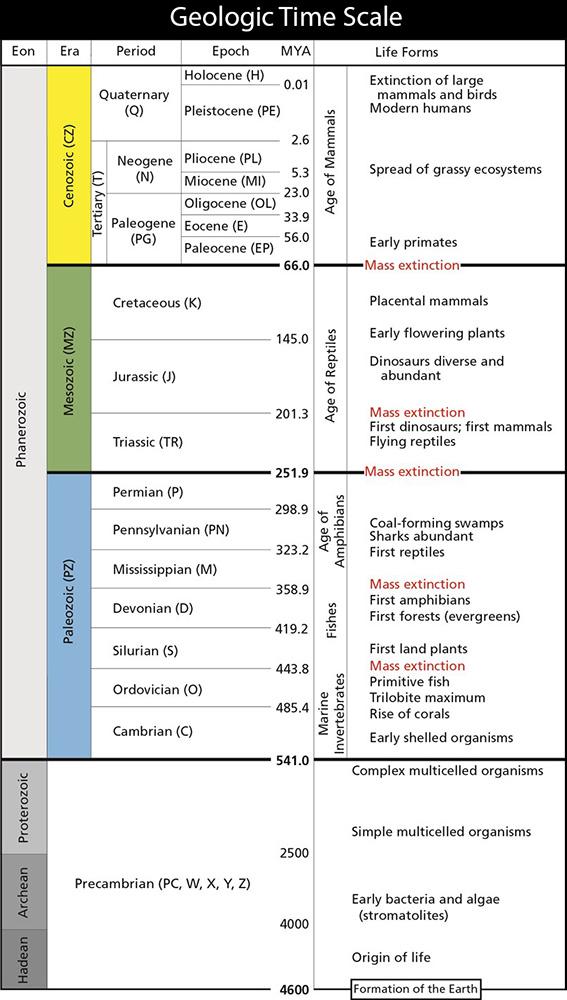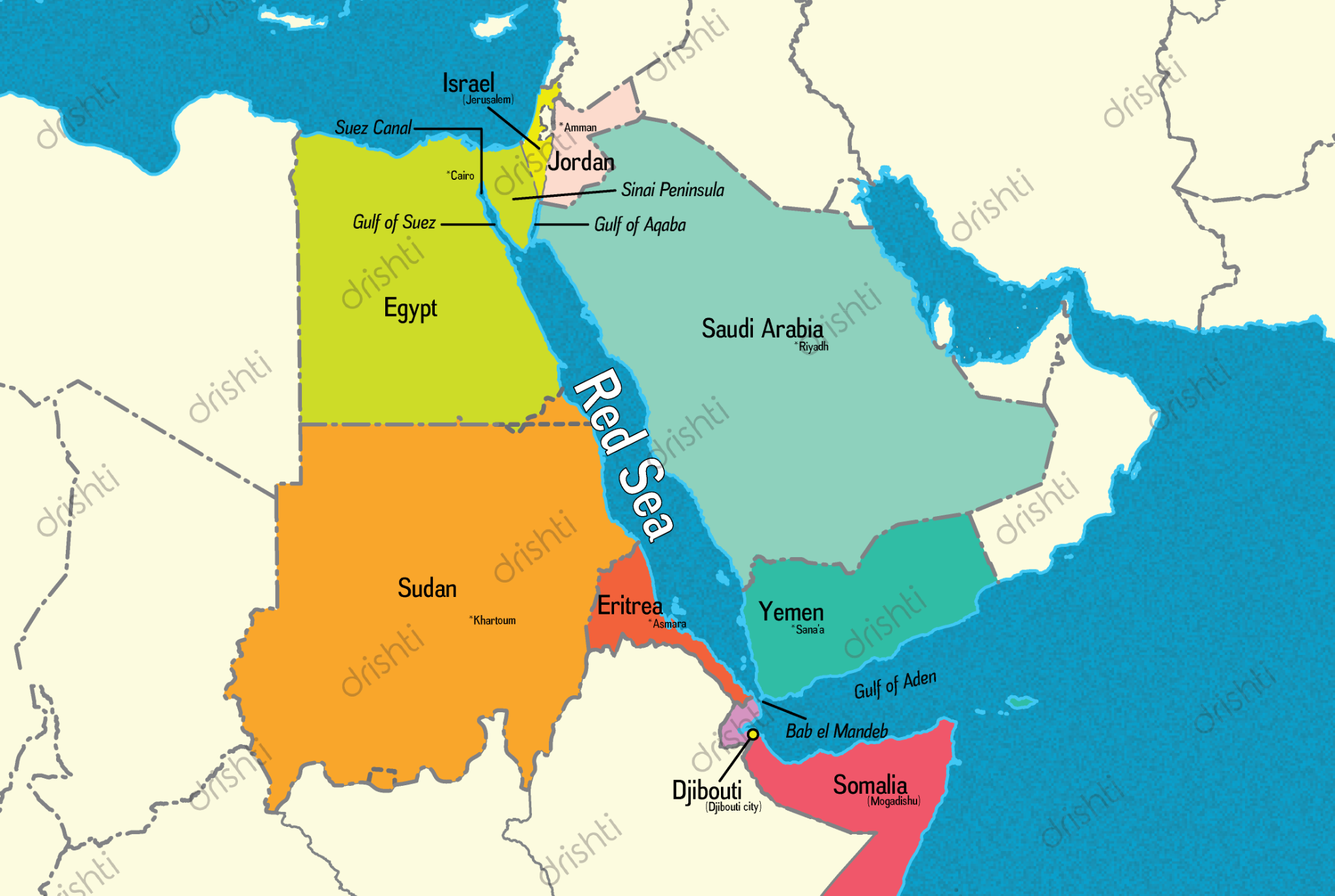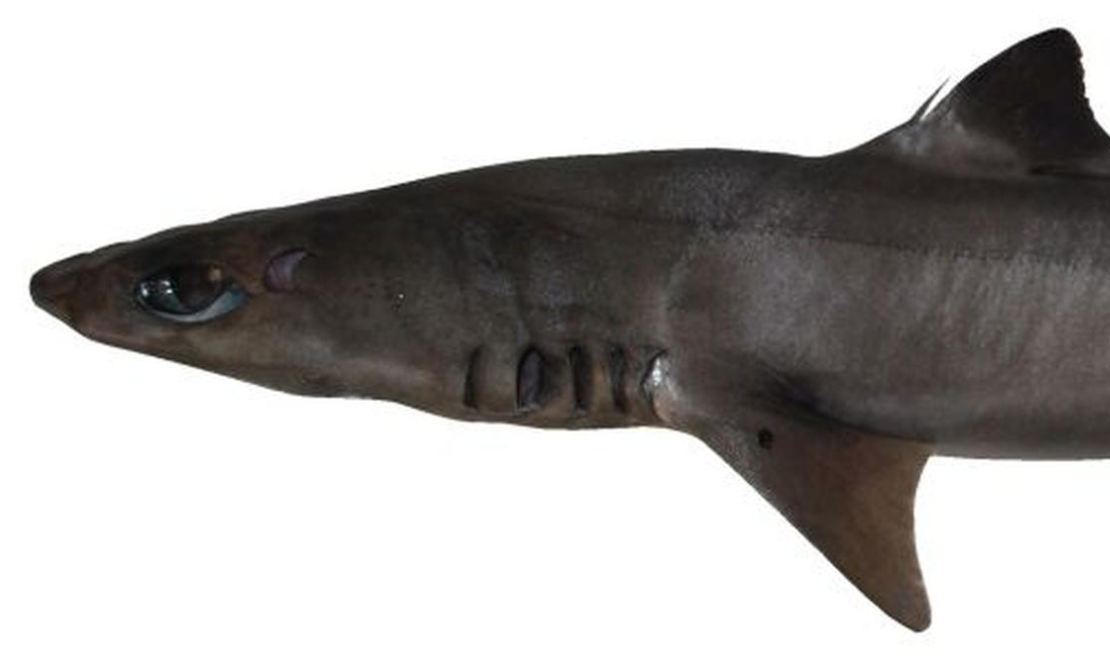Governance
NITI Aayog SDG India Index 2023-24
For Prelims: NITI Aayog, Sustainable Development Goal, United Nations, SDG India Index, Ujjwala Yojana, Pradhan Mantri Awas Yojana, Jal Jeevan Mission, Direct Benefit Transfer, Renewable Energy, Skill India Mission, PM Mudra Yojana
For Mains: Sustainable Development Goals, Government Initiatives, India's approach to the Sustainable Development Goals
Why in News?
The NITI (National Institution for Transforming India) Aayog has released its latest Sustainable Development Goal (SDG) India Index for 2023-24, showing significant progress in sustainable development across states and union territory of India.
What is the SDG India Index?
- About: The SDG India Index is a tool developed by NITI Aayog to measure and track India’s progress towards the SDGs set by the United Nations.
- The Index supports the localization of SDGs, encouraging states to integrate these goals into their development plans.
- It serves as a benchmark for policymakers to identify gaps and prioritise actions towards achieving sustainable development by 2030.
- Methodology: The Index assesses the performance of states and union territories (UTs) across 16 SDGs using a set of indicators aligned with national priorities.
- The SDG India Index measures national progress using 113 indicators aligned to the National Indicator Framework.
- Goal-wise scores are computed for the 16 SDGs, and overall composite scores are derived for each State/UT. Goal 14 (Life Below Water) has not been included in the calculation of the Composite Score for the Index as it solely pertains to the nine coastal States.
- Scores range from 0-100, with higher scores indicating greater progress toward SDG targets.
- State/UTs are categorised based on their SDG India Index score as follows: Aspirant: 0–49, Performer: 50–64, Front-Runner: 65–99, and Achiever: 100.
- Impact on Development: The Index promotes competitive and cooperative federalism, encouraging States and UTs to learn from each other and close outcome-based gaps.
- It provides a comprehensive analysis of progress, highlighting achievements and areas needing improvement.
- India fully integrated the SDGs into its national development strategies and is proud of its SDG localisation model based on institutional ownership, collaborative competition, capacity building, and a whole-of-society approach.
- The Index serves as a barometer for measuring progress towards Viksit Bharat @ 2047 and informs national and subnational development strategies.
What are the Key Highlights of the SDG India Index for 2023-24?
- Overall Progress: India's overall SDG score improved to 71 in 2023-24 from 66 in 2020-21 and 57 in 2018. All states have shown improvement in overall scores. Progress has been largely driven by targeted government interventions in poverty reduction, economic growth, and climate action.
- Top Performers: Kerala and Uttarakhand emerged as the best-performing states, each scoring 79 points.
- Lowest Performer: Bihar lagged behind with a score of 57 points, followed by Jharkhand at 62 points.
- Front-Runner States: 32 states and union territories (UTs) are in the front-runner category, with 10 new entrants including Arunachal Pradesh, Assam, Chhattisgarh, and Uttar Pradesh.
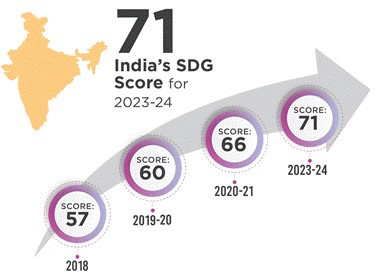
-
Government Interventions Contributions to SDG Progress:
-
Pradhan Mantri Awas Yojana: Over 4 crore houses built.
-
Swachh Bharat Mission: 11 crore toilets and 2.23 lakh community sanitary complexes constructed.
-
Ujjwala Yojana: 10 crore LPG connections provided.
-
Jal Jeevan Mission: Tap water connections in over 14.9 crore households.
-
Ayushman Bharat-PMJAY: Over 30 crore beneficiaries. Access to 150,000
-
Ayushman Arogya Mandir which offer primary medical care and provide affordable generic medicines.
-
PM Mudra Yojana: 43 crore loans sanctioned.
-
Saubhagya Scheme: 100% household electrification.
-
Renewable Energy: Solar power capacity increased from 2.82 GW to 73.32 GW in a decade.
-
National Food Security Act (NFSA): Coverage of over 80 crore people.
- Direct Benefit Transfer (DBT): Rs. 34 lakh crore made through PM-Jan Dhan accounts.
- Skill India Mission: Over 1.4 crore youth being trained and upskilled and has reskilled 54 lakh youth.
-
-
Specific SDGs:
| SDG | Key Highlights |
| Goal 1: No Poverty |
|
| Goal 2: Zero Hunger |
|
|
Goal 3: Good Health and Well-being |
|
| Goal 4: Quality Education |
|
| Goal 5: Gender Equality |
|
|
Goal 6: Clean Water and Sanitation |
|
| Goal 7: Affordable and Clean Energy |
|
| Goal 8: Decent Work and Economic Growth |
|
| Goal 9: Industry, Innovation and Infrastructure |
|
| Goal 10: Reduced Inequalities |
|
| Goal 11: Sustainable Cities and Communities |
|
| Goal 12: Responsible Consumption and Production |
|
|
Goal 13: Climate Action |
|
|
Goal 14: Life Below Water |
|
| Goal 15: Life on Land |
|
| Goal 16: Peace, Justice and Strong Institutions |
|
- Overview of the Goals: The goals "No Poverty", "Decent Work and Economic Growth", and "Life on Land" showed the highest increase in points across states from 2020-21 scores, while "Gender Equality" and "Peace, Justice, and Strong Institution" had the smallest increase.
- "Reduced Inequalities" was the only goal to decrease in points from 67 in 2020-21 to 65 in 2023-24. This reduction reflects the distribution of wealth and suggests that in many parts of India, there are high levels of inequality, particularly in relation to employment opportunities at the lower end of the socioeconomic spectrum. The goal of reducing inequalities also includes addressing gender inequality in workforce participation.
- Gender Equality received the lowest score among all goals, with a marginal increase from the previous year. Issues such as sex ratio at birth, women owning land and assets, employment, and labour force participation rate are areas of concern, particularly in states with below 900 sex ratio at birth.
- The Quality of Education goal increased by 4 points to 61, highlighting that some states, particularly in central India, still face challenges. The main issue in India is not access, but rather the quality of education, which impacts employment opportunities.
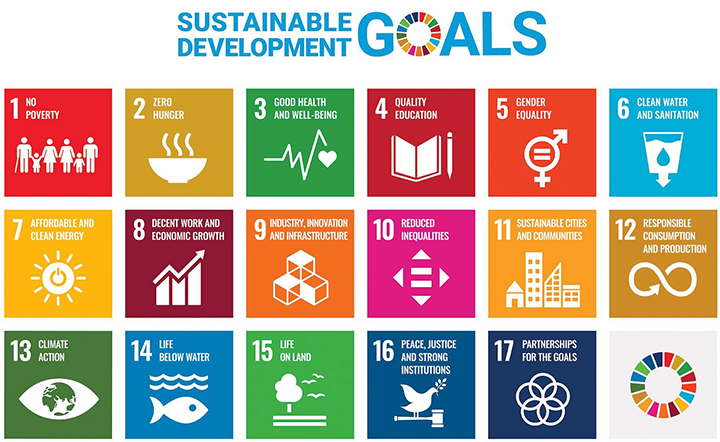
NITI Aayog
- The Planning Commission in India was replaced by NITI Aayog in 2015, with a shift towards a 'Bottom-Up' approach and emphasis on cooperative federalism.
- The composition of NITI Aayog includes the Prime Minister as Chairperson, Chief Ministers of all states and Lt. Governors of Union Territories in the Governing Council, and experts nominated by the Prime Minister as Special Invitees.
- Chief Executive Officer appointed by the Prime Minister for a specific term, holding the rank of Secretary to the Government of India.
- The NITI Aayog recognises the need for a more flexible approach to economic planning in India, taking into account the diverse strengths and weaknesses of its states. This shift is necessary to make India competitive in the global economy.
- The key objectives are to promote cooperative federalism with states, develop plans at the village level, incorporate national security into economic strategy, focus on marginalised sections of society, encourage partnerships with stakeholders and think tanks, create a support system for knowledge and innovation, resolve inter-sectoral issues, and maintain a resource centre for good governance and sustainable development practices.
- Major Initiatives: SDG India Index, Composite Water Management Index, Atal Innovation Mission, Aspirational District Programme, Health Index, India Innovation Index, and Good Governance Index.
|
Drishti Mains Question: Q. Evaluate the overall progress of India towards achieving the Sustainable Development Goals as reflected in the SDG India Index 2023-24. What factors have contributed to this progress? |
UPSC Civil Services Examination, Previous Year Questions (PYQs)
Prelims
Q. Atal Innovation Mission is set up under the (2019)
(a) Department of Science and Technology
(b) Ministry of Labour and Employment
(c) NITI Aayog
(d) Ministry of Skill Development and Entrepreneurship
Ans: (c)
Q. The Government of India has established NITI Aayog to replace the (2015)
(a) Human Rights Commission
(b) Finance Commission
(c) Law Commission
(d) Planning Commission
Ans: (d)
Q. Sustainable development is described as the development that meets the needs of the present without compromising the ability of future generations to meet their own needs. In this perspective, inherently the concept of sustainable development is intertwined with which of the following concepts? (2010)
(a) Social justice and empowerment
(b) Inclusive Growth
(c) Globalization
(d) Carrying capacity
Ans: (d)
Mains
Q. How are the principles followed by the NITI Aayog different from those followed by erstwhile Planning Commission in India? (2018)
Q. Access to affordable, reliable, sustainable and modern energy is the sine qua non to achieve Sustainable Development Goals (SDGs).” Comment on the progress made in India in this regard. (2018)


Indian Economy
Boosting Lighthouse Tourism in India
For Prelims: Maritime India Vision (MIV) 2030, Rigveda, UNESCO World Heritage Site, Lighthouse, Mamallapuram, Sagarmala initiative
For Mains: Boosting lighthouse tourism, Maritime India Vision (MIV) 2030, Growth & Development, Sustainable tourism practices
Why in News?
Union Minister of Ports, Shipping & Waterways announced plans to boost lighthouse tourism under Maritime India Vision (MIV) 2030 and Maritime Amrit Kaal Vision 2047 in India during a stakeholders meeting organised by the Directorate General of Lighthouses and Lightships in Vizhinjam, Kerala.
What is a Lighthouse?
- About: A lighthouse is a tower, building, or other type of structure designed to emit light from a system of lamps and lenses and used as an aid to navigation for mariners and local fisherman. Lighthouses mark dangerous coastlines, hazardous shoals, reefs, safe entries to harbours.
-
Currently, India has established & maintaining 194 lighthouses along the coastal line & Islands of Indian waters.
-
-
Historical Role:
-
Ancient India: The Rigveda and Satapatha Brahmana mention navigation in the Purva (East) and Paschima (West) Samudra. The Rigveda also describes sea voyages by Varuna and Vashistha.
-
Mythological Connections: The story of ‘Manu,’ being rescued from a flood, highlights early Indian knowledge of sea and navigation.
- In the 7th century A.D., Pallava king Narasimhavarman-I established a lighthouse at Mamallapuram (Mahabalipuram), using log fires to guide ships.
- This lighthouse offers stunning views of the shore temple complex, a UNESCO World Heritage Site.
-
- Significant Modern Marvels:
-
| Lighthouse | Description | Image |
| Tangasseri Lighthouse, Kollam, Kerala | The tallest lighthouse in Kerala, constructed by the British. It is painted in white and red bands, making it a fascinating sight. |  |
| Mahabalipuram Lighthouse,Tamil Nadu | An old lighthouse from the colonial period, built next to an ancient lighthouse commissioned by Mahendra Pallava of the Pallava dynasty. Though non-functional, it is open for visitors to explore. | 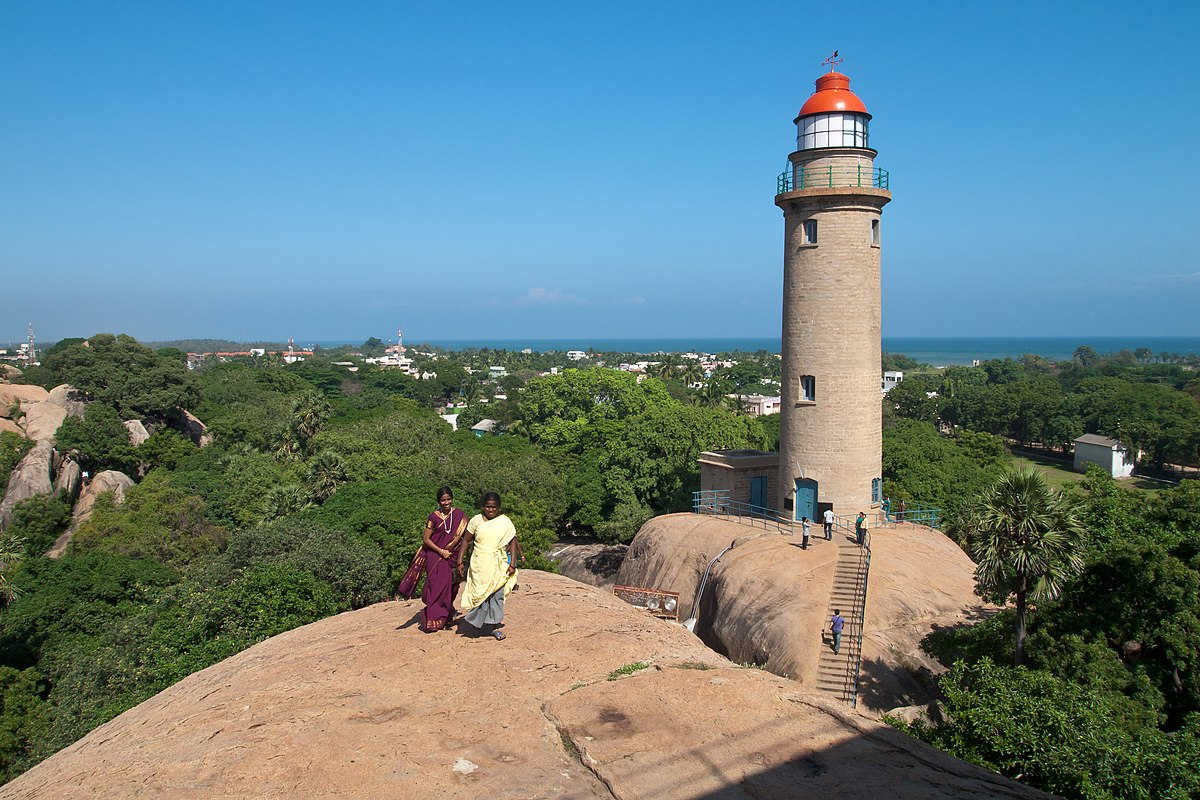 |
| Kaup Beach Lighthouse, Udupi, Karnataka | The existing lighthouse was constructed by the British in 1901 and has undergone various improvements over the years, including the installation of different lighting equipment. |  |
| Vizhinjam Lighthouse, Kovalam, Kerala | A lighted beacon was established in nearby Kolachal in 1925, and a day mark beacon was provided at Vizhinjam in 1960. A major lighthouse was completed in 1972 it is One of the oldest and most picturesque lighthouses in India. |  |
| Fort Aguada Lighthouse, Goa | A well-preserved Portuguese structure and one of Goa's prime attractions. It offers dreamy sea views, making it a must-visit spot. |  |
| Chandrabhaga, Odisha. | Chandrabhaga lighthouse, located near Konark temple, has endured severe cyclones like the Super Cyclone (1999), Phailin (2013), and Fani (2019). |  |
Note
In the 3rd century B.C., Ptolemy II built the famous Pharos of Alexandria (Lighthouse of Alexandria), one of the seven wonders of the ancient world.
- The tower, made of high-quality kedan stone bricks embedded in molten lead, was operated for 1600 years. In the 13th century AD, it collapsed due to a severe earthquake.
What is the Role of Modern Lighthouses in India?
- Modern lighthouses continue to guide ships, mark ports, and send signals, serving as valuable backups to GPS technology.
- After the 2008 Mumbai terror attacks, lighthouses were equipped with state-of-the-art radars for coastal surveillance.
- The Indian government established the Automatic Identification System (AIS) to facilitate communication between fishermen and lighthouses.
- The Marine Aids to Navigation Act of 2021 aimed to promote the historical and cultural value of lighthouses.
- Events like the Indian Lighthouse Festival in Goa showcase the heritage and tourism potential of these structures. Many lighthouses are now tourist attractions, offering historical insights and stunning views.
Modern Navigational Aids
- Light Vessels: These floating aids mark isolated shoals or submerged dangers used where lighthouse construction is impractical. Equipped with lanterns and optical equipment, they neutralise vessel inclinations due to waves.
- Buoys: Buoys provide navigational directions to mariners. Initially using acetylene gas, they now operate on electric lights powered by solar photovoltaic modules.
- M.F Radio Beacons: Installed between 1955-60, these were replaced by the Differential Global Positioning System (DGPS) for improved accuracy in maritime positioning.
- Racons: These radar transponder beacons return a distinctive code signal to ship radar, providing range, bearing, and identification data.
What are the Benefits of Boosting Lighthouse Tourism in India?
- Cultural Heritage: Lighthouses offer historical and cultural value, making them educational hubs and events like India’s First Lighthouse Festival “the Bharatiya Prakash Sthamb Utsav”, held at the historic Fort Aguada in Goa celebrates India’s rich maritime heritage, promoting awareness and appreciation of historical lighthouses that have been largely ignored.
- Under the Marine Aids to Navigation Act, 2021, certain lighthouses may be designated as heritage sites, expanding their roles beyond navigation aids to cultural and educational purposes.
- Visiting a lighthouse offers a glimpse into their centuries-long role in trade, conquest, and travel. Lighthouses provide unique vantage points for enjoying seaside sunsets and learning about maritime history.
- Economic Development: The Directorate General of Lighthouses and Lightships has identified 75 lighthouses for potential investment in tourism development, promising economic benefits to surrounding areas.
- This initiative highlights investment potential through Public-Private Partnerships (PPP), encouraging private entities to invest in developing these sites as tourist destinations.
- Increased tourism can lead to higher footfall in coastal areas, benefiting local vendors, restaurants, and service providers.
- Environmental Awareness: The focus on heritage lighthouses promotes eco-friendly tourism practices that can protect coastal environments while drawing visitors.
- The initiative aims to transform lighthouses into multifaceted tourist destinations, offering diverse experiences beyond traditional beach tourism.
Directorate General of Lighthouses and Lightships
- The Directorate General of Lighthouses and Lightships, under the Ministry of Ports, Shipping and Waterways, provides aids to marine navigation along the Indian coast. It is headquartered in Noida, with regional headquarters in nine districts (Gandhidham, Jamnagar, Mumbai, Goa, Cochin, Chennai, Visakhapatnam , Kolkata and Port Blair).
- The aim is to ensure safe and secure navigation in Indian waters through visual aids such as lighthouses, light vessels, buoys, and beacons, as well as radio aids like DGPS and RACONs.
- The Directorate also provides Vessel Traffic Service for interactive navigation control. It is responsible for maintaining general aids to marine navigation as per the Lighthouse Act 1927, while local aids are maintained by Maritime State Government organisations.
- The Directorate offers technical support for maintenance of local lights and may take over maintenance if international standards are not met due to financial constraints or lack of technical personnel.
What is the Maritime India Vision (MIV) 2030?
- Maritime India Vision 2030 is a ten-year blueprint for the maritime sector in India, released by the Prime Minister at the Maritime India Summit in November 2020. It aims to boost waterways, shipbuilding industry, and cruise tourism.
- The Maritime India Vision 2030 highlights essential themes for India to secure its position in the global maritime sector. It will supersede the Sagarmala initiative and aims to boost waterways and encourage cruise tourism in India.
- MIV 2030 has identified key interventions in 4 areas: brownfield capacity augmentation, developing world-class Mega Ports, development of transhipment hub in Southern India, and infrastructure modernisation.
- India aims to achieve a 5% share in world exports in the next 5 to 10 years, requiring aggressive growth in exports. To achieve this, Indian Ports need to improve maritime capabilities and Ease of Doing Business (EoDB). Key interventions include creating a National Logistics Portal (Marine), digitising processes across maritime stakeholders, implementing digital-led smart ports, and monitoring port performance through system-driven approaches.
- Enhance logistics efficiency and cost competitiveness through 200+ port connectivity projects, mechanisation, technology adoption, evacuation time reduction, cost reduction, coastal shipping promotion, and portland industrialization.
- MIV 2030 aims to improve governance mechanisms, amend existing laws, strengthen the Maritime and Coastguard Agency (MCA), and promote PPP, fiscal support, and financial resilience to support sustainable growth in the maritime sector.
- India aims to become the leading seafaring nation by focusing on education, research, and training. Currently contributing 10-12% of the world's seafarers, India faces increasing competition from countries like the Philippines.
- Key interventions include promoting research and innovation, improving education and training, and creating a favourable environment for seafarers and port capability development.
- India aims to achieve 40% of its national energy from renewable sources by 2030 and its ports need to align with the International Marine Organization's goals for safe, efficient, and sustainable ports.
- The MIV 2030 has identified key interventions to enhance India's position as a leader in safe, sustainable, and green ports, including increasing renewable energy usage, reducing air emissions, optimising water usage, improving waste management, implementing a Zero accident safety program, and establishing a centralised monitoring system.
|
Drishti Mains Question: Q. Discuss the historical significance of lighthouses in India and their role in maritime navigation. How can boosting lighthouse tourism contribute to preserving this heritage and boost India’s economy? |


Agriculture
Revamping Buffer Stock
For Prelims: Food Corporation of India (FCI), Buffer stocks, Consumer Price Index (CPI), Inflation rates, Essential commodities, Famine, Food Security, Public Distribution System (PDS), Minimum support price (MSP), Five Year Plan, Targeted Public Distribution System (TPDS), Other Welfare Schemes (OWS), NAFED, SFAC
For Mains: Buffer stock and Issues
Why in News?
Recently, open market sales of wheat and chana have curbed soaring inflation in cereals and pulses, highlighting the rationale for expanding buffer stocks to include other staples amidst rising climate-induced supply disruptions and price fluctuations.
What is the Buffer Stock Policy of the Government of India?
- Buffer stock refers to a reserve of a commodity that is used to offset price fluctuations and unforeseen emergencies.
- The concept of buffer stock was first introduced during the 4th Five Year Plan (1969-74).
- A buffer stock of food grains in the Central Pool is maintained by the Government of India (GOI) for:
- meeting the prescribed minimum buffer stock norms for food security
- monthly release of food grains for supply through Targeted Public Distribution System (TPDS) and Other Welfare Schemes (OWS)
- meeting emergency situations arising out of unexpected crop failure, natural disasters, etc., and
- price stabilisation or market intervention to augment supply so as to help moderate the open market prices.
- The Cabinet Committee on Economic Affairs fixes the minimum buffer norms on a quarterly basis.
- The buffer stock figures are normally reviewed after every five years.
- The government has engaged the National Agricultural Cooperative Marketing Federation of India Limited (NAFED), Small Farmers Agri-business Consortium (SFAC), and Food Corporation of India (FCI) to procure pulses for buffer stock.
- In addition to buffer norms, the Government has prescribed a strategic reserve of wheat (since 2008) and rice (since 2009).
- In 2015, the government has created a buffer stock of pulses of 1.5 lakh tonnes to control the fluctuation of prices of pulses.
- Presently, stocking norms fixed by the Government comprise of:
- Operational stocks: for meeting monthly distributional requirements under TPDS and OWS.
- Food security stocks/reserves: for meeting the shortfall in procurement.
- Food grains stock in the Central Pool consists of stock held by the Food Corporation of India (FCI), states participating in the Decentralised Procurement Scheme, and the state government agencies (SGAs) for both buffer and operational requirements.
Food Corporation of India (FCI)
- FCI was set up in 1965 (under the Food Corporation Act, 1964) against the backdrop of a major shortage of grains, especially wheat, in the country.
- FCI was mandated with three basic objectives:
- to provide effective price support to farmers
- to procure and supply grains to PDS for distributing subsidised staples to economically vulnerable sections of society
- keep a strategic reserve to stabilise markets for basic food grains.
- FCI continuously assesses and monitors the storage capacity and based on the storage gap assessment, storage capacities are created/hired.
What are the Benefits and Challenges of Buffer Stocks?
- Benefits:
- Food Security: To ensure the availability of food grains for the public, especially the vulnerable sections, during adverse conditions like droughts, floods, or other crises.
- Price Stabilisation: To maintain stable prices of essential food grains in the market by regulating supply.
- In 2022-23, the Food Corporation of India (FCI) released 34.82 lakh tonnes of wheat to boost market supplies.
- The FCI’s open market sale scheme significantly reduced retail inflation in cereals and wheat.
- Support to Farmers: Assures farmers of a minimum price for their produce, which helps in stabilising their income and encourages continued agricultural production.
- Disaster Management: Provides immediate relief during natural disasters by supplying food grains without delay. E.g . During Covid-19 supply of free ration.
- Challenges:
- Storage Issues: India faces significant challenges in terms of inadequate storage facilities, leading to wastage and spoilage of food grains.
- Procurement Imbalance: There is often an imbalance in the procurement of different grains, leading to excess stocks of some and shortages of others.
- Financial Burden: Maintaining large buffer stocks entails high financial costs related to procurement, storage, and distribution.
- Inefficiencies in Distribution: The PDS often faces issues like leakages, pilferage, and corruption, which hinder the effective distribution of buffer stocks.
- Quality Concerns: Ensuring the quality of stored food grains over extended periods is a significant challenge.
Way Forward
- Diversify Procurement Practices: Government procurement is currently limited to rice, wheat, and a few pulses and oilseeds. Expanding this to include other essential food items, like staple vegetables and skimmed milk powder (SMP), could help stabilise prices further.
- The Union government plans to significantly increase onion irradiation to extend the shelf life of its buffer stock, using a safe, regulated dose of radiation that prevents sprouting and reduces perishability,
- Scientific Evaluation of Buffer Stock Norms: Use econometric methods and time-series data to logically evaluate and set norms for operational and strategic buffer grain stocks, based on decennial census data and food grain distribution commitments.
- Dynamic Buffer Norms: India's current quarterly buffer stock norms should consider a more dynamic approach aligned with real-time data.
- Utilise data from the Department of Agriculture, Cooperation, and Farmers Welfare and the National Sample Survey Office to adjust buffer stock levels based on factors like crop yield forecasts, international market trends, and potential disruptions.
- Technological Integration: Explore integrating technology like blockchain for transparent and secure buffer stock management. Additionally, consider utilising weather forecasting data from the India Meteorological Department to preemptively adjust buffer stocks based on potential weather events impacting production.
- Financial Prudence: Ensuring that the financial burden of maintaining buffer stocks is managed through better budgeting and reducing procurement inefficiencies.
- Private Sector Participation: Explore collaboration with private players to leverage their expertise in areas such as storage facilities, logistics, or risk management strategies, alongside FCI's management of buffer stocks.
- Unbundle Competing Objectives: Separate the goals of price stabilisation, food security, and production incentives to avoid conflicts and inefficiencies in buffer-stocking operations.
|
Drishti Mains Question: Q. Discuss the need to diversify buffer stocks in India. What are the key challenges associated with this diversification? |
UPSC Civil Services Examination, Previous Year Question (PYQ)
Prelims:
Q.1 In the context of India’s preparation for Climate-Smart Agriculture, consider the following statements: (2021)
- The ‘Climate-Smart Village’ approach in India is a part of a project led by the Climate Change, Agriculture and Food Security (CCAFS), an international research programme.
- The project of CCAFS is carried out under Consultative Group on International Agricultural Research (CGIAR) headquartered in France.
- The International Crops Research Institute for the Semi-Arid Tropics (ICRISAT) in India is one of the CGIAR’s research centres.
Which of the statements given above are correct?
(a) 1 and 2 only
(b) 2 and 3 only
(c) 1 and 3 only
(d) 1, 2 and 3
Ans: (d)
Q.2 With reference to the provisions made under the National Food Security Act, 2013, consider the following statements: (2018)
- The families coming under the category of ‘below poverty line (BPL)’ only are eligible to receive subsidised food grains.
- The eldest woman in a household, of age 18 years or above, shall be the head of the household for the purpose of issuance of a ration card.
- Pregnant women and lactating mothers are entitled to a ‘take-home ration’ of 1600 calories per day during pregnancy and for six months thereafter.
Which of the statements given above is/are correct?
(a) 1 and 2 only
(b) 2 only
(c) 1 and 3 only
(d) 3 only
Ans: (b)
Mains
Q.1 In what way could the replacement of price subsidy with Direct Benefit Transfer (DBT) change the scenario of subsidies in India? Discuss. (2015)


Agriculture
Climate Resilient Agriculture
For Prelims: Climate-resilient agriculture, FAO, climate change, National Innovations on Climate Resilient Agriculture (NICRA), Indian Council of Agricultural Research (ICAR), Agroforestry
For Mains: Climate-resilient agriculture, National Innovations on Climate Resilient Agriculture (NICRA)
Why in News?
Recently, the Union government is planning to unveil a framework to promote climate-resilient agriculture in 50,000 villages located in climatically-vulnerable districts.
What is Climate Resilient Agriculture (CRA)?
- About:
-
According to the Food and Agriculture Organization (FAO), climate resilient agriculture is defined as “the ability of an agricultural system to anticipate and prepare for, as well as adapt to, absorb and recover from the impacts of changes in climate and extreme weather”.
-
-
Impact of Climate Change on Agriculture:
- National Innovations on Climate Resilient Agriculture (NICRA), a network project of the Indian Council of Agricultural Research (ICAR) studied the impact of climate change on agriculture and farmers.
- Studies indicate that in the absence of adaptation measures, climate change projections are likely to reduce irrigated rice yields by 3%, rainfed rice yields by 7 to 28%, wheat yield by 3.2-5.3%, maize yield by 9-10% and increased the soybean yield by 2.5-5.5% for the period 2020-2039.
- Extreme events like drought affect food and nutrient consumption, increase incidence of poverty, encourage outmigration, increase indebtedness and reduce farmers’ capacity to adapt to climate change.
- CRA Practices:
- Agroforestry: Agroforestry involves the cultivation of trees along with crops, which can help to improve soil health, reduce soil erosion, and enhance biodiversity.
- This practice helps to increase soil moisture retention, and provide multiple benefits to farmers.
- Soil and Water Conservation: Techniques such as contour bunding, farm ponds, and check dams can help to improve soil moisture retention, reduce soil erosion, and increase groundwater recharge.
-
These practices can also help farmers to cope with droughts and water scarcity, which are becoming more frequent due to climate change.
-
-
Sustainable Agriculture: Practices such as crop diversification, organic farming, and integrated pest management help to reduce the use of chemical inputs and improve soil health.
-
These practices also reduce greenhouse gas emissions and improve farmers’ income and food security.
-
- Livestock Management: Livestock management practices such as stall-feeding and mixed cropping can improve the productivity and resilience of livestock systems.
- These practices also reduce the pressure on natural resources such as grazing lands, which are becoming scarce due to climate change.
- Agroforestry: Agroforestry involves the cultivation of trees along with crops, which can help to improve soil health, reduce soil erosion, and enhance biodiversity.
What are Steps Taken by the Government for Climate Resilient Agriculture?
- The Government is implementing the National Action Plan on Climate Change (NAPCC) which provides a policy framework for climate action in the country.
- National Mission for Sustainable Agriculture (NMSA) is one of the Missions within the NAPCC to make Indian agriculture more resilient.
- NMSA was approved for three major components i.e. Rainfed Area Development (RAD), On Farm Water Management (OFWM) and Soil Health Management (SHM).
- Subsequently, four new programmes were introduced namely Soil Health Card (SHC), Paramparagat Krishi Vikas Yojana (PKVY), Mission Organic Value Chain Development in North Eastern Region (MOVCDNER) and Per Drop More Crop.
- In addition, the restructured National Bamboo Mission (NBM) was launched in April 2018.
- Indian Council of Agricultural Research (ICAR) has launched a flagship network project namely National Innovations in Climate Resilient Agriculture (NICRA) in 2011 to promote climate resilient agricultural practices.
- It is a multi-sectoral, multi-location program carrying the major mandate of addressing climate change and variability, and addressing a range of stakeholders needs across the country.
- Research, demonstration and capacity building are the three major components, besides providing policy briefs on several aspects related to agriculture and climate change.
- The salient achievements of ICAR on climate resilient agriculture includes development of 1888 climate resilient crop varieties, development of District Agriculture Contingency Plans (DACPs) for 650 Districts etc.
- Government has introduced flagship yield based Pradhan Mantri Fasal Bima Yojana (PMFBY) along with Restructured Weather Based Crop Insurance Scheme (RWBCIS) from Kharif 2016 to protect the farmers including small land-owners from climate hazards.
- The scheme aims at supporting sustainable production in agriculture sector by way of providing financial support to farmers suffering crop loss/damage due to unforeseen natural calamities, adverse weather incidence to stabilize income of farmers.
Other Initiatives Related to Agriculture
- National Mission of Natural Farming (NMNF)
-
Mission Organic Value Chain Development for North Eastern Region (MOVCDNER)
- PM’s ‘NAMO Drone Didi’ scheme
What are the Key Challenges Related to Climate Resilient Agriculture?
- Developing countries are more vulnerable to climate risks since they rely mostly on agriculture, and lack the necessary technologies to manage the risk. For example in India 65% of the population is engaged in agriculture and allied activities.
- Due to the absence of adequate mitigation and adaptation measures, these poor farmers remain trapped in a cycle of low income, high debt, and poverty.
- The MSP regime currently focusses on few crops and other crops are not assisted adequately which results in lesser diversification of crops.
- Too much reliance on groundwater particularly in northern India negates the efforts done in the realm of sustainable agriculture.
- The agriculture sector contributes approximately 14% to the country’s greenhouse gas emissions, with the use of synthetic nitrogen fertilisers significantly raising nitrous oxide emission rates.
- India's agricultural productivity is relatively low compared to other major producers, with an average rice yield of about 2.5 tons per hectare, whereas China averages about 6.5 tons per hectare.
- The most challenging political aspect of climate change policy is the inadequate recognition by village Panchayats or local self-governing bodies leading to lack of policy initiative at the ground level.
Way Forward
- The adverse impact of climate change on developing countries can be mitigated through integrated approaches such as technological advancements, meteorology, and data sciences.
- The National Innovations in Climate Resilient Agriculture (NICRA) Scheme should be implemented in all risk-vulnerable villages to protect farmers from climate and meteorological incidents.
- There is a need for diversification of crops that will enable agricultural ecosystems to adapt to climate change.
- Crop diversity also helps ensure food security, enhancing soil fertility, controlling pests, and bringing yield stability.
- The ambit of drip irrigation should be extended from high-value horticultural crops to wider varieties of crops.
- The government should carefully reconsider electricity subsidies for groundwater extraction, as they significantly contribute to falling groundwater levels.
- Tools which optimise irrigation schedules, conserve water, and minimise environmental impact must be used.
- Since organic farming has the potential to minimise greenhouse gases the Ministry should promote organic farming to help farmers adapt to climate change.
- Fertilizer Nitrogen is prohibited in organic farming which leads to lower nitrous oxide emissions.
- Krishi Vigyan Kendras (KVK) needs improvements in infrastructure and technological facilities. They should use technological innovations to impart information 24/7, and in vernacular languages. These changes will revamp existing KVKs and equip them to meet climate-related challenges.
- There needs to be increased public investment in advancing and disseminating climate-resilient crop varieties. These crops would have heightened tolerance to temperature and precipitation fluctuations and will be more proficient in water and nutrient utilisation.
- The agricultural policy must prioritise improvements in crop productivity, and formulate safety nets to cope with climate change-induced risks.
- Efforts by governance in the realm of climate change may not yield results unless the local government is included in the agriculture policy formulation.
- Since Panchayats can leverage funds from several government schemes, awareness at that level will be beneficial.
- Introducing a ranking system at the national or regional level for villages adopting the best climate-resilient practices may incentivise adoption of such practices.
|
Drishti Mains Question: Q. What are the major challenges faced in implementing climate-resilient agricultural practices, and suggest measures to overcome these challenges? |
UPSC Civil Services Examination, Previous Year Question (PYQ)
Prelims:
Q. In the context of India’s preparation for Climate -Smart Agriculture, consider the following statements:(2021)
- The ‘Climate-Smart Village’ approach in India is a part of a project led by the Climate Change, Agriculture and Food Security (CCAFS), an international research programme.
- The project of CCAFS is carried out under Consultative Group on International Agricultural Research (CGIAR) headquartered in France.
- The International Crops Research Institute for the Semi-Arid Tropics (ICRISAT) in India is one of the CGIAR’s research centres.
Which of the statements given above are correct?
(a) 1 and 2 only
(b) 2 and 3 only
(c) 1 and 3 only
(d) 1, 2 and 3
Ans: (d)
Q. With reference to the ‘Global Alliance for ClimateSmart Agriculture (GACSA)’, which of the following statements is/are correct? (2018)
- GACSA is an outcome of the Climate Summit held in Paris in 2015.
- Membership of GACSA does not create any binding obligations.
- India was instrumental in the creation of GACSA.
Select the correct answer using the code given below:
(a) 1 and 3 only
(b) 2 only
(c) 2 and 3 only
(d) 1, 2 and 3
Ans: (b)
Mains:
Q. How far is Integrated Farming System (IFS) helpful in sustaining agricultural production? (2019)


Facts for UPSC Mains
Puri Jagannath Temple's Ratna Bhandar
Why in News?
Recently, the Odisha government unlocked the revered Ratna Bhandar of the 12th-century Jagannath temple in Puri after 46 years.
What is Jagannath Temple’s Ratna Bhandar?
- About:
- The Ratna Bhandar is a valuable collection of treasures, located on the northern side of the Jagamohana (assembly hall of temple).
- It contains the priceless jewelry of the sibling deities Lord Jagannath, Lord Balabhadra, and Goddess Subhadra which have been offered by former kings over many centuries and by devotees from around the globe.
- The Records of Rights created in accordance with the Puri Sri Jagannath Temple Act, 1952, includes an inventory of the precious jewelry and assorted adornments belonging to Lord Jagannath.
- It contains two chambers namely the outer (Bahara Bhandar) and inner chamber (Bhitar Bhandar), which has remained closed for the past 46 years.
- As per the inventory last made in 1978, the Ratna Bhandar has a total 128.38 kg of gold and 221.53 kg of silver.
- The Archaeological Survey of India (ASI), is the custodian of the temple and had performed a structural inspection of the Ratna Bhandar in 2008 but could not enter the inner chamber.
What are the Key Facts About Jagannath Temple?
- Puri’s Jagannath temple is among the most revered Hindu shrines in the state (and India), is dedicated to the worship of Lord Jagannath, believed to be an incarnation of Vishnu, along with his older brother Balabhadra and sister Subhadra.
- It is known as the “White Pagoda” and is one of the chardhams, four of the most sacred pilgrimage sites for Hindus.
- It is also part of the Golden Triangle of Odisha which includes three major tourist destinations in the state that form a triangle and are well-connected.
- It was constructed by a famous king of Ganga Dynasty Ananta Varman Chodaganga Deva dating back to the 12th century.
- It is an outstanding example of Kalinga architecture, featuring distinctive curvilinear towers, intricate carvings, and ornate sculptures.
- The four gates of the Jagannath temple are located on the mid-points of its boundary wall, and face the four cardinal directions. They are named after different animals.
| Gate | Direction | Belief |
| Singhadwara (Lion's Gate) | East | Attain moksha (liberation from the cycle of birth-rebirth) |
| Hastidwara (Elephant Gate) | North | Brings wealth |
| Aswadwara (Horse Gate) | South | Helps one shed kama (lust) |
| Vyaghradwara (Tiger Gate) | West | Reminds one of one's dharma (cosmic law underlying right behaviour and social order) |
- It is also called as ‘Yamanika Tirtha’ where, according to the Hindu beliefs, the power of ‘Yama’, the god of death, has been nullified in Puri due to the presence of Lord Jagannath.
- Associated Major Festivals: Snana Yatra, Netrotsava, Rath Yatra, Sayan Ekadasi.
Odisha School (Kalinga Architecture)
- It is a sub-school of the Nagara school, developed in various parts of the Kalinga empire. Some of its features were:
- The exterior walls were lavishly decorated with intricate carvings, but the interior walls were plain.
- There was no use of pillars in the porch. Iron girders were used instead to support the roof.
- The shikhara in the Odisha school was known as rekha deul. They were almost vertical roofs which suddenly curved inwards sharply.
Read more: Temple Architecture
UPSC Civil Services Examination, Previous Year Question (PYQ)
Prelims:
Q. With reference to Chausath Yogini Temple situated near Morena, consider the following statements: (2021)
- It is a circular temple built during the reign of Kachchhapaghata Dynasty.
- It is the only circular temple built in India.
- It was meant to promote the Vaishnava cult in the region.
- Its design has given rise to a popular belief that it was the inspiration behind the Indian Parliament building.
Which of the statements given above are correct?
(a) 1 and 2
(b) 2 and 3 only
(c) 1 and 4
(d) 2, 3 and 4
Ans: (c)
Q. Building ‘Kalyaana Mandapas’ was a notable feature in the temple construction in the kingdom of (2019)
(a) Chalukya
(b) Chandela
(c) Rashtrakuta
(d) Vijayanagara
Ans: (d)
Mains:
Q. The rock-cut architecture represents one of the most important sources of our knowledge of early Indian art and history. Discuss. (2020)


Important Facts For Prelims
GHGs, Rainfall and Climate Change
Why in News?
A recent study has revealed that unprecedented increase in greenhouse gases can decrease rainfall in the equatorial region.
- This can further lead to replacement of India’s biodiversity hotspots consisting of evergreen forests in the Western Ghats, northeast India and the Andamans into deciduous forests.
What has the Recent Study Revealed?
- About:
- The study pointed out the impacts of increased greenhouse gases, specifically high levels of atmospheric carbon dioxide, on rainfall patterns and vegetation in equatorial regions.
- The study used fossil pollen (from Lignite Mine of Kutch) and carbon isotope data from the Eocene era (54 million years ago, a period of global warming).
- The study used data from deep time hyperthermal events that are considered potential analogs for future climate predictions.
- Extreme climate warmth (hyperthermal) events through deep-time (geological time) offer insights into how the Earth may respond to present-day warming related to greenhouse gas emissions.
- Impact on Rainfall and Vegetation Shifts:
- During the Eocene era, when atmospheric CO2 concentrations exceeded 1000 parts per million by volume (ppmv) near the equator, there was a significant decrease in rainfall which led to increase in deciduous forests.
- Relevance to Current Climate Change:
- The study draws parallels between past climatic conditions (Eocene era) and potential future scenarios under increased greenhouse gas emissions.
- Insights from the study may contribute to strategies for mitigating the impacts of climate change on rainforests and other sensitive ecosystems.
What is Previous Evidence of Climate Change?
- Geological records document alternating periods of glacial and warmer inter-glacial phases.
- In the distant geological past, approximately 500-300 million years ago during the Cambrian, Ordovician, and Silurian periods, Earth's climate was notably warmer.
- During the Pleistocene epoch, the Earth underwent cycles of glaciation and interglacial periods, with the last major glacial peak occurring around 18,000 years ago. The current interglacial period began approximately 10,000 years ago.
- The most recent glacial period spanned from about 120,000 to 11,500 years ago. Since then, Earth has been in the interglacial period known as the Holocene epoch.
- In regions with high altitudes and latitudes, geological features and sediment deposits bear evidence of the advance and retreat of glaciers indicating fluctuations between warm and cold periods.
- Glacial periods are characterised as colder, dustier, and generally drier compared to interglacial periods. These cycles of glaciation and inter-glacials are discernible in numerous paleoclimate records from both marine and terrestrial environments worldwide.
- Interglacial periods tend to occur during periods of peak solar radiation in the Northern Hemisphere summer.
- Indian Context:
- India also witnessed alternate wet and dry periods.
- Archaeological findings show that the Rajasthan desert experienced wet and cool climate around 8,000 B.C.
- In the period 3,000-1,700 B.C. the region had higher rainfall after which the dry conditions prevailed.
UPSC Civil Services Examination, Previous Year Question (PYQ)
Prelims:
Q. Human activities in the recent past have caused the increased concentration of carbon dioxide in the atmosphere, but a lot of it does not remain in the lower atmosphere because of ? (2011)
- its escape into the outer stratosphere.
- the photosynthesis by phytoplankton in the oceans.
- the trapping of air in the polar ice caps.
Which of the statements given above is/are correct?
(a) 1 and 2
(b) 2 only
(c) 2 and 3
(d) 3 only
Ans: (b)
Q. Which of the following phenomena might have influenced the evolution of organisms? (2014)
- Continental drift
- Glacial cycles
Select the correct answer using the code given below:
(a) 1 only
(b) 2 only
(c) Both 1 and 2
(d) Neither 1 nor 2
Ans: (C)
Mains:
Q. How do the melting of the Arctic ice and glaciers of the Antarctic differently affect the weather patterns and human activities on the Earth? Explain. (2021)


Rapid Fire
Restoration of Interest Equalization Scheme
The engineering exporters' body Engineering Export Promotion Council (EEPC India) has requested to restore the Interest Equalization Scheme (IES) for all exporters and increase benefits for Micro, Small and Medium Enterprises (MSME).
- The IES for pre and post shipment rupee credit availed by exporters was started in 2015 and it lapsed in June 2024 for all exporters, except MSMEs.
- IES is a commerce ministry program that helps exporters get bank loans at a subsidised interest rate. EEPC urges to restore interest subvention rate to 3% for 410 tariff lines and raise the rate to 5% for MSMEs exporting under any tariff line.
- EEPC India, established in 1955, has played a significant role in the growth of Indian engineering exports, which have increased from USD 10 million in 1955 to USD 109.32 billion in the fiscal year 2023-2024.
- It is recognised as the model EPC in India by the Union Ministry of Commerce and Industry and is sponsored by the Government of India. It actively contributes to government policies and serves as a bridge between the Indian engineering industry and the government.
- Remission of Duties and Taxes on Export Products (RoDTEP) introduced in 2021 replaces the existing MEIS (Merchandise Exports from India Scheme).
- It also ensures exporters receive refunds on previously non-recoverable embedded taxes and duties, while IES aims to provide interest rate equalisation on pre- and post-shipment export credit to boost exports.
Read more: Boosting Exports from MSMEs: NITI Aayog


Rapid Fire
IMO Honours for Exceptional Bravery at sea
Captain Avhilash Rawat and his crew from an oil tanker have received the 2024 International Maritime Organisation (IMO) Award for Exceptional Bravery at Sea.
- They were honoured for their "determination and endurance" during a rescue mission in the Red Sea, where they faced a serious fire after their ship was hit by an anti-ship missile believed to be fired by Iranian-backed Houthi rebels.
- The IMO annually invites nominations from member countries to honour seafarers for exceptional bravery at sea who were reviewed by an Assessment Panel of experts.
- The panel's recommendations were then reviewed by a Panel of Judges chaired by the Chairperson of the IMO Council.
- The final recommendations led to prestigious recognitions being bestowed on Indian seafarers.
- The annual awards ceremony will be held at IMO Headquarters in London on 2nd December 2024 during the 109th session of the Maritime Security Committee.
- The IMO, a specialised agency of the UN, regulates shipping and prevents marine pollution from ships. It was established in 1948 after a UN conference in Geneva and officially came into existence in 1958. It has 175 Member States, three Associate Members, India became a member in 1959.
- The IMO's main role is to create a fair and effective regulatory framework for the shipping industry that is universally adopted and implemented. Additionally, IMO celebrates World Maritime Day every last Thursday of September to emphasise the importance of shipping and maritime activities.
Read more: Escalating Threat in Red Sea, India Re-elected to International Maritime Organisation Council


Rapid Fire
Kharchi Puja
Recently, Kharchi Puja, which is observed annually on the Shukla Ashtami day of the lunar month of Ashadha, was celebrated.
- During the Puja day, the 14 gods are ceremonially taken by the royal priests known as "Chantai" to the river "Saidra" for bathing in its holy waters, after which they are reverently returned to the temple.
- Throughout the festival, the Tripuri people not only venerate their 14 deities but also pay homage to the earth.
- A significant ritual of the celebration involves the construction of the Chaturdasha Mandapa, a structure symbolising the royal palace of the Tripuri kings.
- Kharchi Puja, also known as the 'Festival of 14 Gods,' this traditional event centers around the worship of Chaturdasa Devata, housed in the ancient Ujjayanta Palace, the ancestral deity of the Tripuri people.
- History:
- Although the festival has its roots in tribal customs, it is now celebrated by both tribal and nontribal communities in Tripura.
- According to belief, Tripura Sundari, the Mother Goddess and guardian deity of Tripura, menstruates during June also called as Ambubachi. There is a widespread belief that the Earth becomes impure during her menstruation.
- Therefore, Kharchi Puja is performed to ceremonially cleanse the Earth once her menstruation ends, purifying the land and absolving its people of sin.
Read more: Ambubachi Mela Cancelled


Rapid Fire
Squalus hima New Species of Dogfish Shark
Scientists of Zoological Survey of India (ZSI) have discovered a new species of deep-water dogfish shark, Squalus hima, from the Sakthikulangara fishing harbour in Kerala along the Arabian Sea.
- Squalus is a genus of dogfish sharks in the family Squalidae. commonly known as spurdogs, and are characterised by smooth dorsal fin spines.
- In the Indian coast, two species of Squalus are found from the southwest coast of India and the new species, Squalus hima n.sp. very similar to Squalus lalannei, but differs in many characteristics.
- The Squalus megalops group species have a short, angular snout, a small mouth nearly as wide as the snout, first dorsal fin origin behind the pectoral fins, and a spotless body.
- The genus of Squalus and Centrophorus are exploited for their liver oil containing high levels of squalene, which is in high demand for pharmaceutical industries, especially for making high-end cosmetic and anti-cancer products.
- The ZSI was established in 1916 to study the diverse fauna of the country. It has evolved into a national institution with headquarters in Kolkata and 16 regional centres.
- It expanded its functions to include environmental impact assessments, conservation area surveys, DNA molecular studies, and wildlife forensic studies. It houses over 5.5 million specimens representing 103,920 species from India and neighbouring countries.
Read more: New Fish Species Discovered



